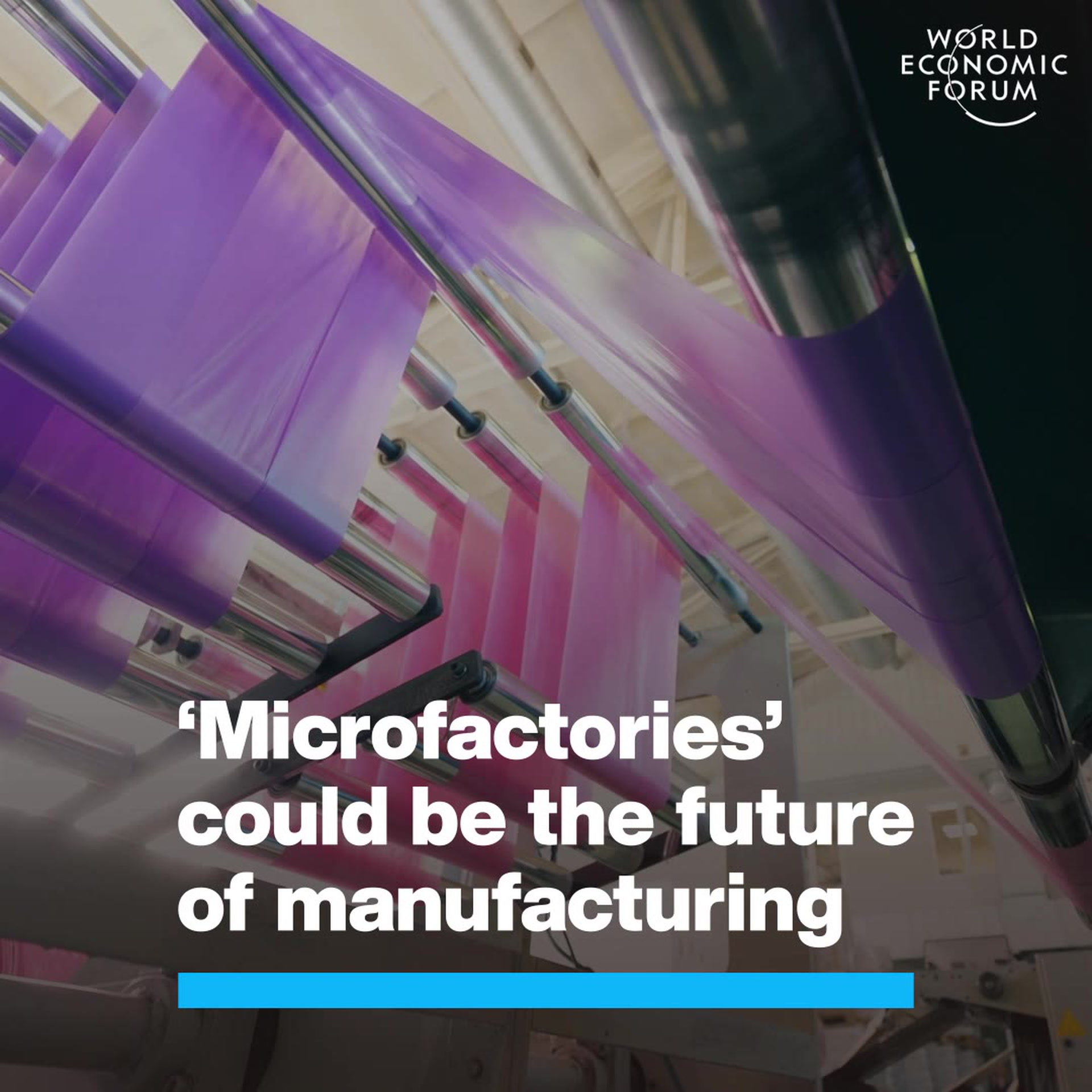Human, flexible, adaptable: key trends for the future of retail

Image: REUTERS/Darrin Zammit Lupi

Get involved with our crowdsourced digital platform to deliver impact at scale
Stay up to date:
Future of Consumption
Buildings constructed in earthquake zones can now be built to be elastic and adaptive; the materials used in their making can flex in the face of strong seismic activity – this bending isn’t a weakness but a strength. Retailers and manufacturers need to reorganise to exhibit a similar flexibility and adaptiveness in the face of the challenges created by the collision of new consumer behaviours and technological innovation.
As explored in the Forum’s project on Operating Models for the Future of Consumption, the new operating models will need to focus on the integration of people, partnerships and purpose. People are the priority because successful businesses never lose sight of their customer’s needs and prioritise them above all else. At the same time, your customers can also play the part of your workforce; and a business built around their aspirations, needs and desires will be able to develop the processes and innovations that deliver a competitive edge.
Customers are now more knowledgeable about how products are made, how materials are sourced and how companies make their profit. As such, they expect a relationship with companies beyond the merely transactional. This however does not mean they are curtailing their shopping; research by A.T.Kearney reveals that more time in the UK is spent online to make purchases than on accessing entertainment, while in Japan, more time is spent on shopping than even social networking.

However, customers are spending more time researching before purchase and there is a shift in what they are searching for. In the last two years alone, searches for ‘best’ product have grown 80%. This hunt for the ‘best’ shows people are prioritising quality over price, longevity over the disposable and ultimately are looking for some greater form of engagement.
I found this relationship dynamic to have changed significantly from when the company I set up, Glasses Direct, created the glasses category online in 2004. Back then, people cared about price, range and convenience. Now, experience of the brand or product, together with a degree of control, whether that means innovations in user involvement or personalisation, are just as important.
This drive for a deeper, ongoing connection means businesses must consider where they can extend their offering far beyond the original core service. Retailers and manufacturers need to identify where they can offer lifetime value which will ensure loyalty from their customers.
Smart companies are picking up on this desire and using technology-driven platforms to help customers to be more empowered and involved. Beer company Brewdog turned to its audience to help finance its business, creating a community of customer stakeholders via its ‘Equity for Punks’ scheme; DIY creative craft company Darby Smart lets its customers design products; and Naked Wines allows its customers to support independent winemakers with a £20 investment into their account - for which they receive discounts and exclusive wines.
Some businesses are making acquisitions to help take them satisfy customer expectations of a richer experience. For example, Walmart bought Bonobos, a premium male online shopping brand, that believes stores are places for stylist consultations and calls its outlets ‘guideshops’. Bonobos is focused on integrating online and offline to provide a frictionless retail experience for its customers, offering advice and the ability to order how and when they wish.
Then there are the partnerships that are becoming increasingly prevalent with the aim of delivering a seamless, convenient experience to the consumer that benefits everybody. For example, Sainsbury’s has just teamed up with Italian restaurant chain Zizzi to offer hot pizzas in-store - but that’s only one of the more obvious ways companies are working together. Organizations are creating intra-industry partnerships with competitors they would never have dreamt of working with previously and thinking more widely about extra-industry partnerships.
In the UK, delivery firm Ocado is using the machine learning ability of the Google Cloud Platform to triage customer’s enquiries by reading all the emails it receives, working out the sentiment and then labelling for priority. Ultimately, the focus is on helping those customers with immediate problems and bolstering loyalty, but the partnership delivers sizeable operational efficiency savings as well.
Other companies are building, rather than buying or partnering, to try to sharpen their agility, fast feedback loops and speed to market. Those that understand how to unlock and guide the skills and expertise of their workforce without a heavy, controlling hand will have an advantage. Some companies are seeing the benefits of self-organizing teams (a group of people who combine different skills to work without the usual managerial supervision toward a common purpose or goal) with a mandate to prioritize progress over perfection and move at an accelerated pace.
RS Components, a predominantly B2B retailer of electrical components in the UK, sets up ‘agile teams’, consisting of 10-15 team members working on solutions, often as a direct result of customer feedback. At the beginning of 2017, the company stated that it was making 200 changes a month to its service, via six agile teams. In our own company we encouraged speed with the ‘design sprint’ - a five-day process for multi-disciplinary teams to answer critical business questions through design, prototyping, and testing ideas with final users and - most importantly - customers.
I’ve mentioned brand purpose – which is a way of defining the true role of a company beyond sales. Companies that know what they are fundamentally in business to do are more likely to be able to attract and harness talent. The rapidly-changing competitive landscape does mean the organising brand purpose of a business can shift rapidly.
The lines between marketplaces, manufacturing and retail are certainly blurring. Amazon is becoming a vertically integrated retailer in more and more categories, with thousands of SKUs in fashion alone, while many manufacturers are leveraging their deep knowledge of their products and the e-commerce capability offered by platforms to position as retailers. Just look at Dyson, which is showcasing its knowledge and letting potential buyers get ‘hands on’ with its products by opening retail outlets with no visible tills. Customers are asking for more expertise, guidance and inspiration around products and who is better placed to answer than the manufacturer? They can build their own brand equity, own their own customer relationships with real influence on the customer decision journey and ensure the right balance of distribution.
Automation is bringing change to the workplace, but businesses also need to embrace ‘the human’ if they want a successful operating model. New roles will emerge that will require the creative, problem-solving skills that only humans can provide. In 2016, OECD analysis showed that 65% of children will work in jobs that do not yet exist and these will require strong interpersonal or creative skills.
Forward-thinking companies will look to change their processes to bring out the best in people by, for example, providing continual learning of new skills and increasing the role of entrepreneurship. As companies automate their more manual or repetitive tasks, a continuous cycle of learning or upskilling will ensure the human workforce remains agile and nimble – the very traits that need to be baked into a company’s culture if it is to stay responsive and relevant.

Companies are going to have to hire or train people so that teams have the resource to both analyse problems and develop creative ideas. Employees will bring their desire for more flexibility and empowerment into the workplace and look for opportunities explore their own ideas. Google has programs such as 20% projects, whereby employees are encouraged to work on projects they think will benefit the company and the experimental Area 120 program, which is a process for forming small teams that can rapidly explore the potential to iterate new products from existing ideas in an entrepreneurial environment.
The idea of upskilling and educating people has both a societal and business benefit. The business benefit is that there is a suitable pool of talent from which to recruit - a matter of concern in the UK. The Federation of Small Businesses is the latest organisation to raise the issue of a digital skills gap as a factor to stalling growth in smaller firms.
Business, government, and sometimes both together must work to bridge this development gap. The UK Government is introducing a new set of technical qualifications called T-Levels to better prepare 16-year-olds for the labour market of the future. Our global CEO, Sundar Pichai, committed to offering everyone in the UK five hours of free digital training and our Digital Garage programme has trained three million people in digital skills via a mix of online teaching and in pop-up spaces. Our own business depends on companies and sole traders understanding and using digital tools, so there’s a clear mutual benefit to helping educate people – be they our customers or our customer’s customers.
The retailers and manufacturers of the future will likely sell a combination of the tangible and intangible – the product and an extended/involving experience. Manufacturers and retailers that reorganize and restructure their operations with a focus on the individual and act in a more human fashion will be able to start building foundations for future growth.
Jamie Murray Wells OBE is Industry Head of Retail at Google UK and is a member of the World Economic Forum’s Steering Group for Operating Models of the Future, which will publish its report for the 2018 Annual Meeting at Davos. He was also a member of the Steering Group for last year’s publication Shaping the Future of Retail for Consumer Industries.
Don't miss any update on this topic
Create a free account and access your personalized content collection with our latest publications and analyses.
License and Republishing
World Economic Forum articles may be republished in accordance with the Creative Commons Attribution-NonCommercial-NoDerivatives 4.0 International Public License, and in accordance with our Terms of Use.
The views expressed in this article are those of the author alone and not the World Economic Forum.
Related topics:
The Agenda Weekly
A weekly update of the most important issues driving the global agenda
You can unsubscribe at any time using the link in our emails. For more details, review our privacy policy.
More on Manufacturing and Value ChainsSee all
Andre S. Yoon and Kyoung Yeon Kim
April 23, 2024
Andrea Willige
March 19, 2024
Raimund Klein
March 4, 2024






